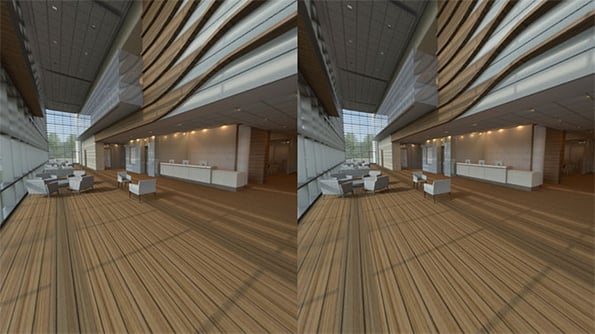The impact technology has on society is blatant and prevalent. From the first computer to wearable tech, society has evolved alongside technological advancements. The way people interact with each other is constantly changing. Information is available at the touch of a button – anywhere with satellite, cellular or internet signal – via smart devices, such as phones and watches, tablets, laptops, computers and even refrigerators. With the advancement of virtual reality (VR) technology, products like Google Glass and Oculus Rift are changing the way people view and interact with their environments.
Virtual reality has been around for generations, from Morton Heilig’s Sensorama—a device that utilized fans, odor emitters, stereo speakers and an enclosed booth displaying stereoscopic images to create an interactive theatre experience—to Ivan Sutherland’s Ultimate Display—a head-mounted display (HMD) attached to a computer that enabled the user to see a virtual world—but it was always flawed. However, technology has evolved considerably to remove mobility limitations and image distortion to allow for an incredibly realistic experience, which lends itself to various applications.
As technology evolved, so have the techniques for architectural visualization. The days of hand sketches gave way to computer-generated images and animations, enabling more-realistic 2D models. Now, VR systems are creating a new way to experience the world, and architectural visualization must keep up. Architects can create virtual, real-scale building plan models that clients can virtually experience, enabling them to understand how a space will look and feel, before constructing it. This experience also enables clients to ask questions or make suggestions based on their experience moving through the exteriors and interiors of the space they will inhabit.
The introduction of new technologies, such as Oculus Rift, Google Glass and Microsoft’s Hololens, not only make these virtual experiences possible, but also are quickly becoming the next wave of how people will experience their daily lives. Array Architects can currently offer this experience with Oculus Rift, a head-mounted display (HMD) that combines head-tracking sensors with stereoscopic 3D rendering techniques through Revit or 3ds Max to create an immersive virtual reality experience.

Alternatively, Google Glass, a face-mounted computer (“smart eyewear”), has the capability to display high-resolution information, creating an augmented reality. The Hololens, a combination of Oculus Rift and Google Glass, is a stand-alone HMD capable of projecting computer-generated objects into the user’s real-world environment.
Imagine being able to communicate with a physician face-to-face from your living room, simply by putting on a pair of goggles. The evolution of these technologies will not only optimize the experience we can bring to our clients, but also become the expected visualization tool for architects to provide to clients.
Going a step further, VR technology can change the design approach entirely. Revit currently allows designers to view their projects in 3D, but soon they will be able to experience and design simultaneously in real time with tools like those mentioned previously. In real time, users can experiment with various options, such as adjusting materials and lights, while experiencing their space. Designers can move a wall and raise a ceiling to achieve their desired effect, all in real time. No need to spend countless hours doing renderings of a design that changes the minute the images are complete. Moreover, you will no longer need a series of still images to understand the space; simply put on the goggles and move your head left or right, up or down. The ability to experience the space while you build offers a level of understanding that surpasses 2D and 3D renderings. It gives you a sense of scale in comparison with yourself that a 3D model cannot.
Additionally, architects and architecture firms with a deep-bench understanding of VR can help clients facilitate the implementation of VR within their health system. From curing phantom pains in amputee victims to providing a practice space for medical students, the applications for VR continue to increase as the technology improves. As more wearable technology becomes available and smart-device use increases, many health systems are considering the best way to leverage technology to engage patients, from being able to access your health information via online databases to sharing your fitness tracker’s data with your health provider. Having a designer knowledgeable in VR and wearable tech applications will set your firm ahead of the curve and enable you to provide better value to your healthcare clients.

